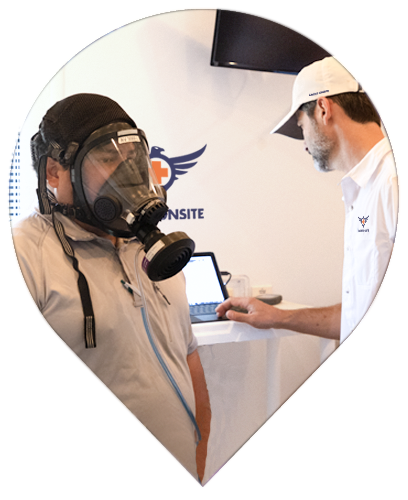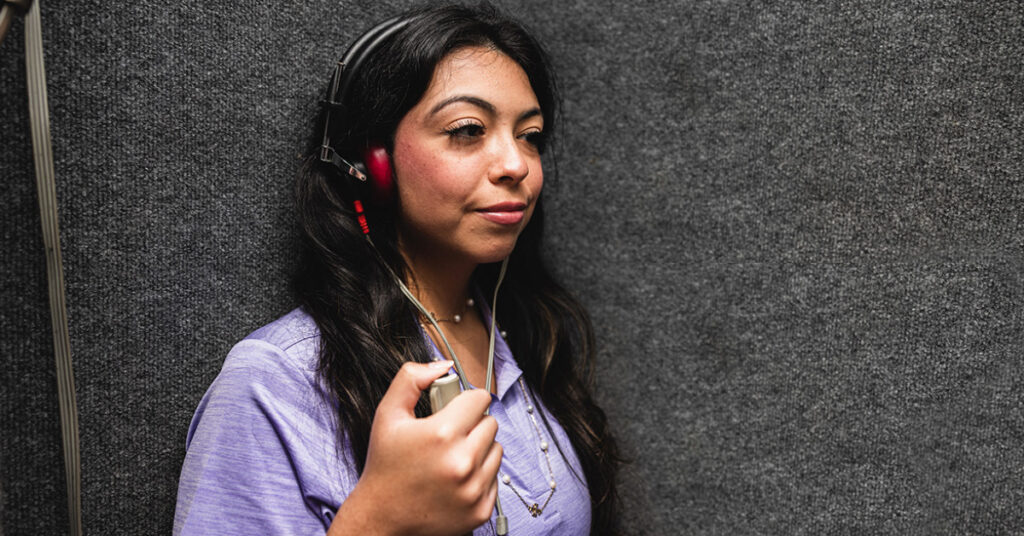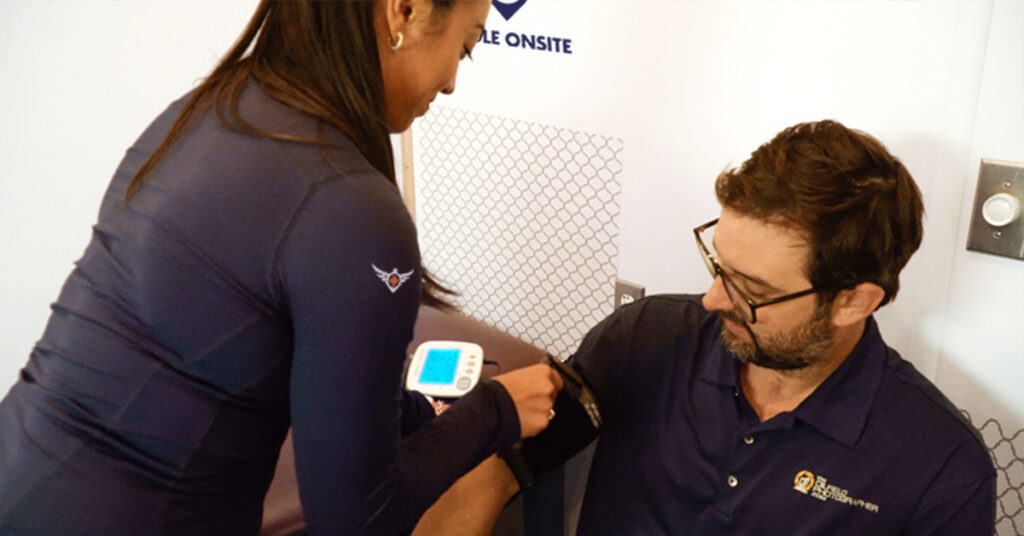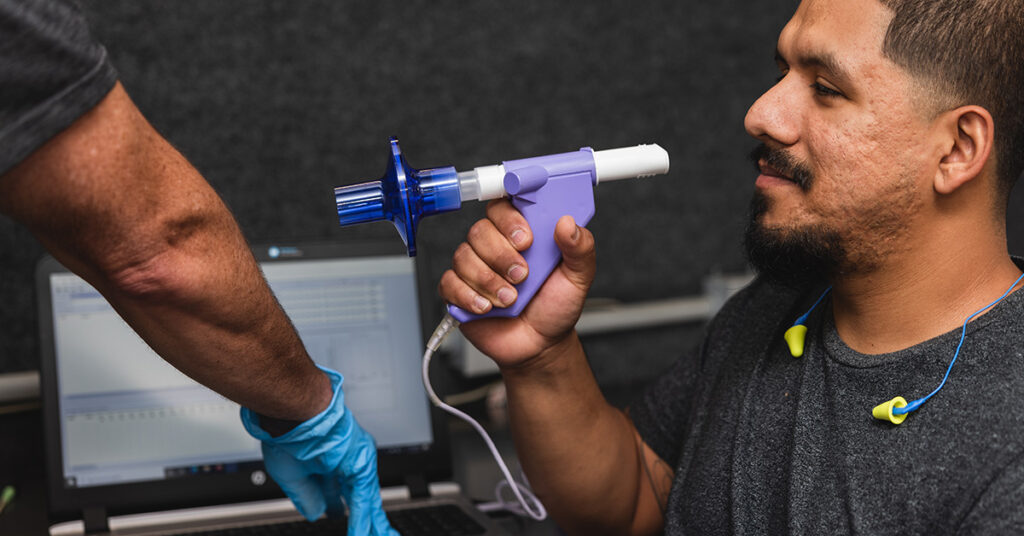According to OSHA, some of the most common workplace violations are from improper respiratory protection practices.
Successful respiratory protection programs include respirator fit testing to ensure employee health and achieve regulatory compliance.
We offer both Quantitative (QNFT) and Qualitative (QLFT) methods of respirator fit testing.
Our experienced technicians use industry leading fit testing equipment such as the AccuTec-IHS AccuFit 9000®, TSI PortaCount® Respirator Fit Tester 8048, and OHD QuantiFit2® to support our customers no matter which respirator is used. We can fit test on any NIOSH approved respirators such as:
- Disposable N, R, or P series (95,99,100)
- Half-masks
- Full-facepieces
- CBRN/gas masks
- Self-contained breathing apparatus (SCBA)
In 2019, OSHA issued a final rule approving new quantitative fit testing protocols for full-facepiece and half-mask elastomeric respirators and for filtering facepiece respirators. The main take-away from this update is the reduction in total fit test duration from 7.2 minutes to only 2.5 minutes.
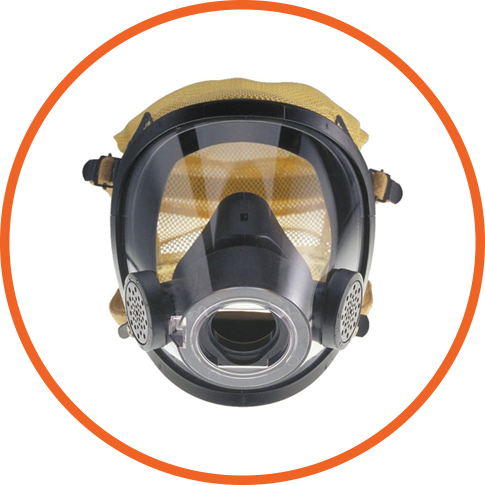
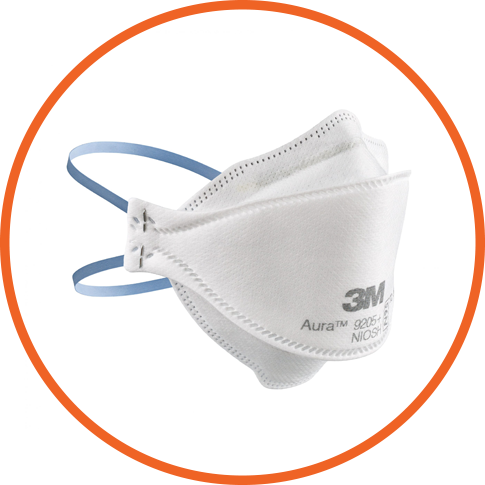
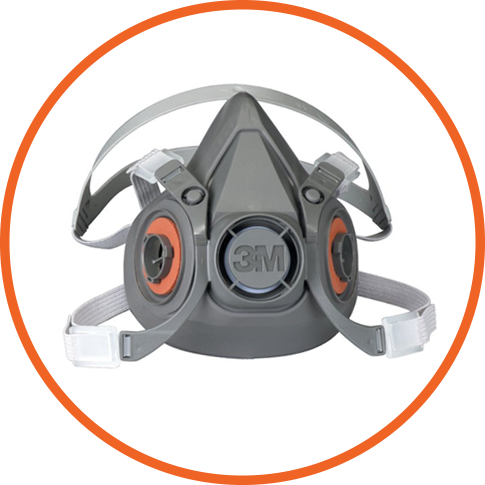
Respirator Fit Testing FAQs
29 CFR 1910.134
A fit test is conducted to verify that a respirator is both comfortable and correctly fits the user. Fit test methods are classified as either qualitative or quantitative. A qualitative fit test is a pass/fail test that relies on the individual’s sensory detection of a test agent, such as taste, smell, or involuntary cough. A quantitative fit test uses an instrument to numerically measure the effectiveness of the respirator.
The employer shall ensure that an employee using a tight-fitting facepiece respirator is fit tested prior to initial use of the respirator, whenever a different respirator facepiece (size, style, model or make) is used, and at least annually thereafter.
The employer shall conduct an additional fit test whenever the employee reports, or the employer, PLHCP, supervisor, or program administrator makes visual observations of, changes in the employee's physical condition that could affect respirator fit. Such conditions include, but are not limited to, facial scarring, dental changes, cosmetic surgery, or an obvious change in body weight.
If after passing a QLFT or QNFT, the employee subsequently notifies the employer, program administrator, supervisor, or PLHCP that the fit of the respirator is unacceptable, the employee shall be given a reasonable opportunity to select a different respirator facepiece and to be retested.
The employer shall not permit respirators with tight-fitting facepieces to be worn by employees who have:
- Facial hair that comes between the sealing surface of the facepiece and the face or that interferes with valve function; or
- Any condition that interferes with the face-to-facepiece seal or valve function.
NIOSH has published the following infographic to help employers educate employees about acceptable facial hair while using tight-fitting respirators:
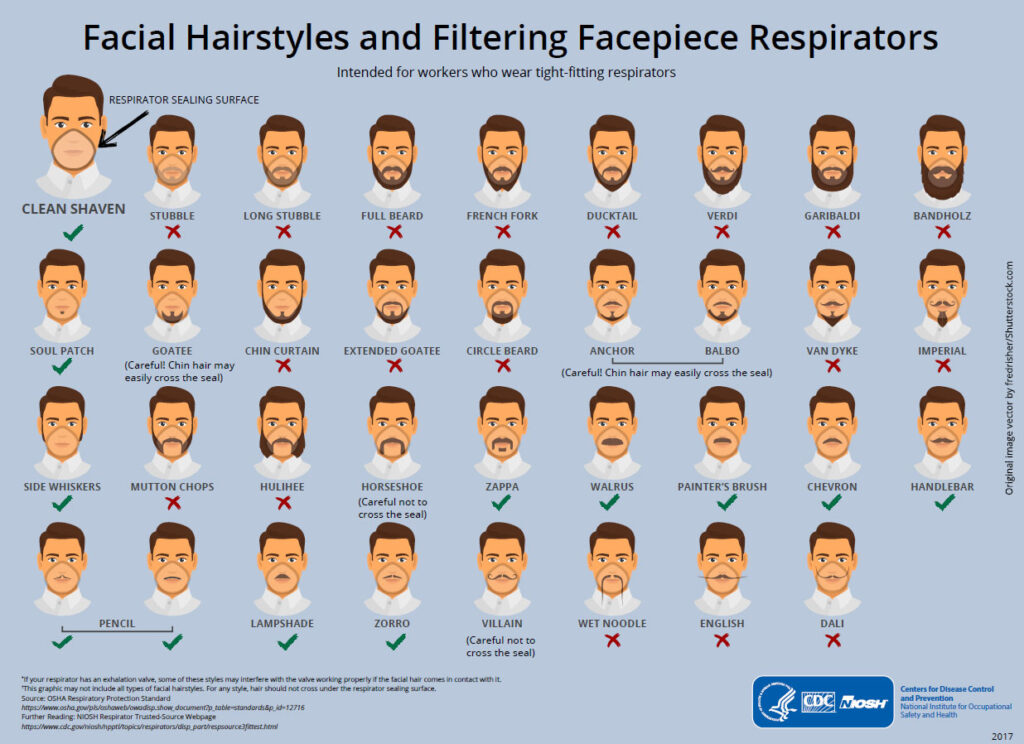
Yes. If we have the masks requested in inventory, we will supply them for fit testing. Otherwise, we can source masks upon customer request.
We recommend, especially since the COVID-19 Pandemic, that employees fit test on their own dedicated respirators. However, this is not always feasible for employers. For non-filtering facepiece respirators such as elastomeric half and full facepieces that may be shared during fit testing, we recommend that employees follow the appropriate cleaning procedures as outlined by their employers’ workplace respiratory protection program and follow guidance from OSHA, EPA, CDC, NIOSH and respirator manufacturers. Specifically, at the end of each day, employers should follow Appendix B-2 of 1910.134: Respirator Cleaning Procedures (Mandatory). While OSHA allows employers to use towelettes between employees during fit testing, we urge extra caution with this approach due to the infectious nature of respiratory diseases such as COVID-19. Our technicians are not responsible for cleaning respirators between each use, even if we supply respirators for fit testing purposes.
Yes. However, this interpretation has not been updated since 1999. Click here to read the interpretation published on OSHA’s website regarding towelettes.
Yes. We can fit test using the employees’ own respirator.
Yes. A card is printed immediately upon successful completion of the respirator fit test and given to the employee. The card provides documentation of the completed fit test and easy field verification of proper respirator size and model for the authorized respirator user.
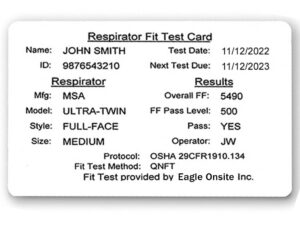
We can scale appropriately to meet your needs. If time is tight, we will staff more equipment and more personnel to help reduce employee time away from work. Speak with our Sales Team to discuss the optimal balance of fit testing resources to meet any scheduling constraints.
This topic is rather extensive. Review the interpretation letter to the standard found here for more information on this topic.
A user seal check is mandatory for individuals using a tight-fitting respirator. Review Appendix B-1 to section 1910.134 here for further information regarding User Seal Check Procedures(Mandatory).
Yes. To review Appendix A to section 1910.134 – Fit Testing Procedures (Mandatory), click here.
Ready to save time and money with onsite services?
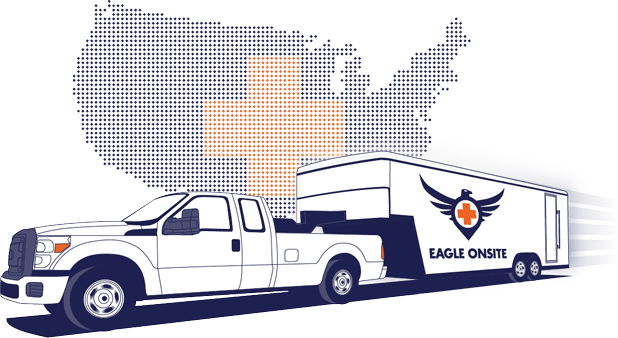
Other Services
Eagle Onsite serves organizations with a full range of onsite occupational medical surveillance services. Click below to learn more about services we offer to help your workforce remain healthy and in compliance.

